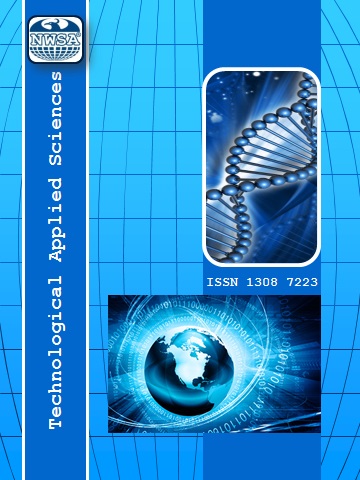References
[1] He, P., Zhang, J., and Zhou, R., (1999). Diffusion bonding technology of a titanium alloy to a stainless steel web with an Ni interlayer. Materials Characterization, 43:287292, DOI:10.1016/S1044-5803(99)00008-X.
[2] Yeh, M.S. and Chuang, T.H., (1995). Low-pressure diffusion bonding of SAE 316 stainless steel by inserting a superplastic interlayer. Scripta Metallurgica et Materialia, 33:12771281, DOI:10.1016/0956-716X(95)00364-2.
[3] Ozdemir, N., Orhan, N., and Aksoy, M., (2003). Effect of graphite shape in vacuum-free diffusion bonding of nodular cast iron with gray cast iron. Journal of Materials Processing Technology, 141:228233, DOI:10.1016/S0924-0136(03)00154-7.
[4] Cary, H.B., (1999). Modern Welding Technology. Prentice-Hall Inc., London, UK.
[5] Kurt, B., (2007). The interface morphology of diffusion bonded dissimilar stainless steel and medium carbon steel couples. Journal of Materials Processing Technology, 190:138-141, DOI:10.1016/j.jmatprotec.2007.03.063.
[6] Orhan, N., Khan, T.I., and Ero?lu, M., (2001). Diffusion bonding of a microduplex stainless steel to Ti-6Al-4V. Scripta Materialia, 45:441446, DOI:10.1016/S1359-6462(01)01041-7.
[7] Kliauga, A.M., Travessa, D., and Ferrante, M., (2001). Al2O3/Ti interlayer/AISI 304 diffusion bonded joint:microstructural characterization of the two interfaces. Materials Characterization, 46:6574, DOI:10.1016/S1044-5803(00)00095-4.
[8] Hidetoshi, S., Hiroyuki, W., Toshiji, M., and Kenji, H., (2003). Low temperature diffusion bonding in a superplastic AZ31 magnesium alloy. Scripta Materialia, 48:12491254, DOI:10.1016/S1359-6462(03)00054-X.
[9] Ihsan, K., (2015) Effect of temperature on microstructure and mechanical behavior of diffusion bonded Armor 500 and AISI 1040 steel. Materials Testing, 57(4), DOI:10.3139/120.110716.
[10] Ozdemir, N. and Bilgin, B., (2009) Interfacial properties of diffusion bonded Ti-6Al-4V to AISI 304 stainless steel by inserting a Cu interlayer. The International Journal of Advanced Manufacturing Technology, 41:519-526, DOI:10.1007/s00170-008-1493-6.
[11] Kaya, M., Kylyç, M., Kyryk, I., Karakurt, E.M., and Gülenç, B., (2017). Diffusion bonding between Ti-6Al-4V alloy and interstital free steel. Materials Science and Engineering Technology, 48:661-665, DOI:10.1002/mawe.201700003.
[12] Özdemir, N., Sarsylmaz, F., and Hasçalyk, A., (2007). Effect of rotational speed on the interface properties of friction-welded AISI 304L to 4340 steel. Materials and Design, 28:301-307, DOI:10.1016/j.matdes.2005.06.011.
[13] Çalygülü, U., (2016). Ti6Al4V ala?ymynyn gümü? ara tabaka kullanylarak difüzyon kayna?y ile birle?tirilebilirli?i. Dicle Üniversitesi Mühendislik Fakültesi Dergisi, 7(3):577-586.
 +90(535) 849 84 68
+90(535) 849 84 68 nwsa.akademi@hotmail.com
nwsa.akademi@hotmail.com Fırat Akademi Samsun-Türkiye
Fırat Akademi Samsun-Türkiye
